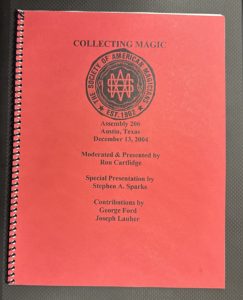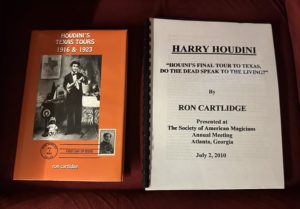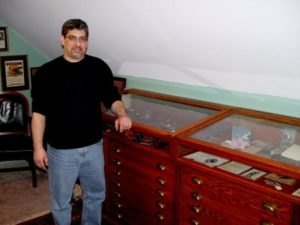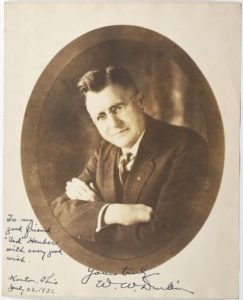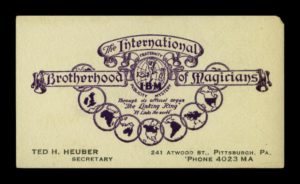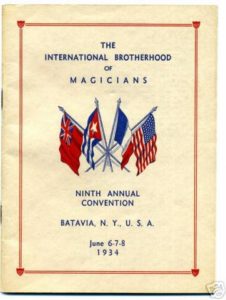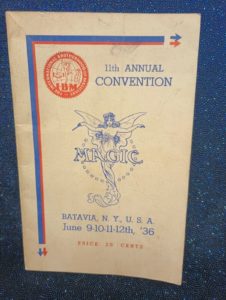Back in 2021, I shared a couple French Cinema cards. Today, I share another one from my collection:
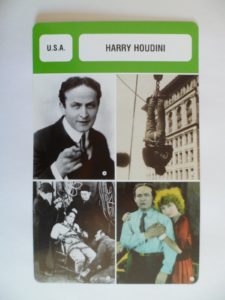

Below is the French to English Translation:
HARRY HOUDINI
Biographical Notice
Real name Erich Weiss, nicknamed The Perpetual Escapee or “The King of Escape, Harry Houdini (1874-1926) was one of the greatest American magicians and one of the leaders who knew how to raise, during his lifetime, his character at the level of myth. He had adopted hid pseudonym in homage, he said, to Robert Houdin, for whom he felt great admiration, and because he would was told that if one added an “i” to the name of his idol, that would mean in French like Houdin.
His fame was worldwide during the first quarter of the 20th century. He escaped from everything: handcuffs, straitjackets, and cells of prison. He gained fame by throwing challenges to police around the world: he was determined to free himself, in record time, from the cell where he would be locked up. To announce his arrival in a city, he freed himself from a straitjacket by force, hoisted, head down, in front of the facade of a building, or was locked in a nailed box which was then thrown into a river. On stage, he was immersed in a milk jug filled with water and padlocked. He was also an expert in traditional magic: a great manipulator of cards, he invented famous illusions such as the disappearance of an elephant or the walking thru a brick wall.
In 1915, on the death of his mother, whom he adored, he tried to make contact with her by attending countless spiritualist sessions but, discovering that he was still deceived, he undertook to lead a crusade against the charlatans of occultism by revealing in broad daylight the tricks they used to dupe their clients.
He approached cinema in 1919 with a fifteen-episode serial, THE MASTER OF MYSTERY, in which, the advertising boasted, each episode included an escape carried out without tricks or stopping the camera. The success of the film allowed him to sign a contract with Paramount which produced his next two films, THE GRIM GAME (1919), where we could see the first collision between two planes filmed in a sequence which was not planned and which was included in the montage because, fortunately, the accident did not cause any casualties. Then it was THE TERROR ISLAND (1920) which received only a small audience, which prompted Paramount to terminate its contract. Two years later, Houdini had set up his own production company and made his most famous film, THE MAN FROM BEYOND (1922), based on a story he authored, and the production of which he entrusted to Burton King, the filmmaker who had directed him in his first steps in cinema. The film enchanted Sir Arthur Conan Doyle, the father of Sherlock Holmes, with whom he was a friend. Although the work did not achieve the expected success, Houdini himself wrote, produced and directed one last film, HALDANE OF THE SECRET SERVICE (1923) which, this time, was a resounding financial failure, ruining his hopes to continue doing cinema. Houdini died prematurely, at age 52, in a stupid accident in Montreal. While he was suffering from chronic appendicitis and was willing to withstand the most violent punches to the stomach, a student, who was visiting him in his theater dressing room, delivered an uppercut which caused peritonitis, and septicemia took his life ten days later, on October 31, 1926.
He has been played numerous times on the small and big screen. In the cinema, by Tony Curtis in HOUDINI, THE GREAT MAGICIAN (Houdini, George Marshall, 1953), by Jeffrey DeMunn in RAGTIME (id., Milos Forman, 1981), by Harvey Keitel in THE MYSTERY OF THE FAIRIES (Fairy Tale: A True Story, Charles Sturridge, 1997) and by Guy Pearce in BEYOND ILLUSION (Death Defying Acts, Gillian Armstrong, 2007). On television, by Paul Michael Glaser in “The Great Houdini”, Melville Shavelson, 1976, by Jeffrey DeMunn again in “The Magician of the Strange” (“Young Houdini”, James Orr, 1987 ) and by Johnathon Schaech in “Houdini” (id., Pen Densham, 1998). (*) Titles preceded by an asterisk were distributed in France on video only.
FILMOGRAPHY
1919 (The Master Mystery, Burton King) – (The Grim Game, Irving Willat)
1920 (Terror Island, James Cruz)
1922 (The Man from Beyond, Burton King)
1923 HALDANE OF THE SECRET SERVICE (Harry Houdini)




